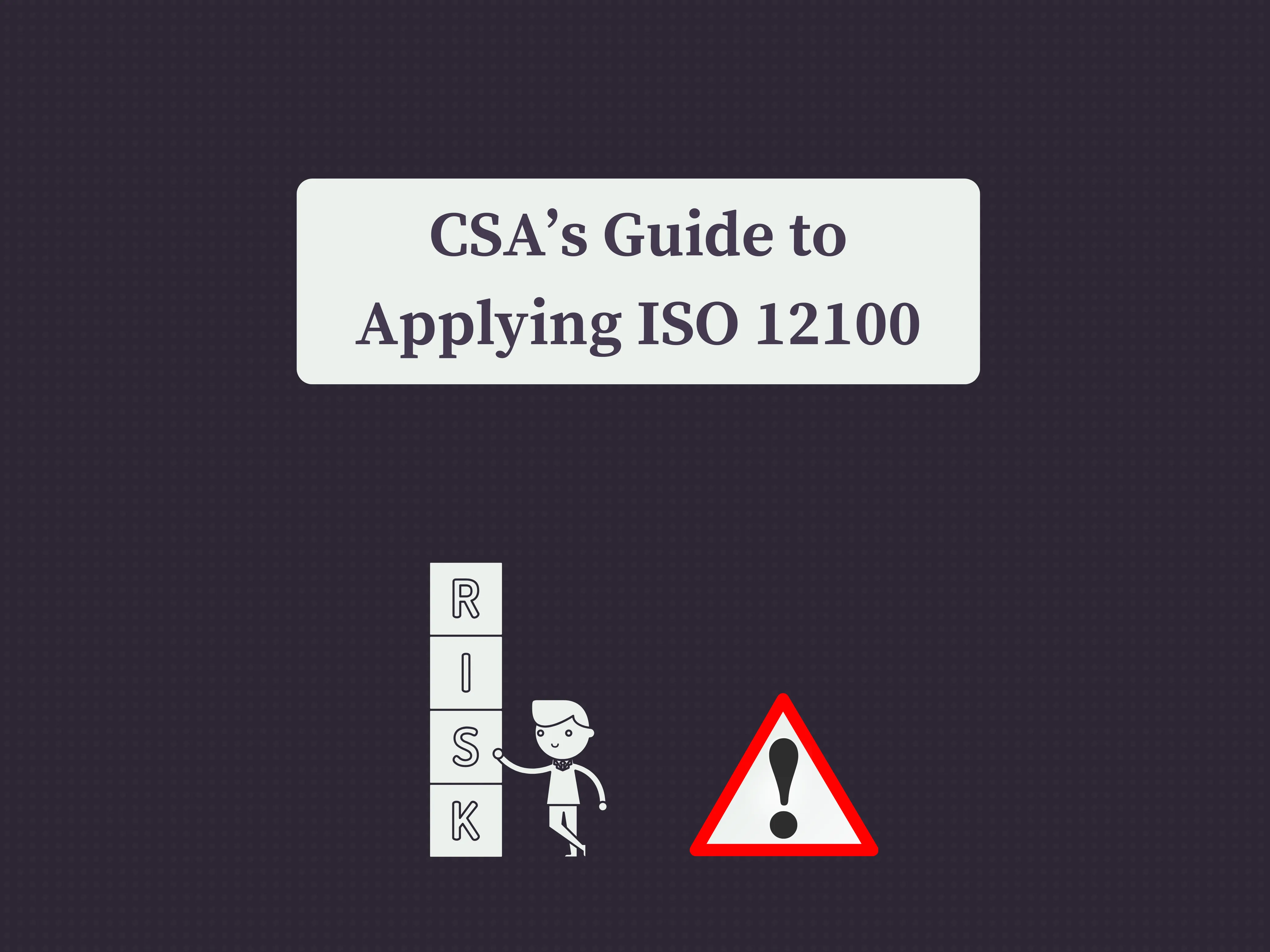Safety in machinery design is non-negotiable, and ISO 12100:2010 provides the blueprint for achieving it. This guide breaks down the risk assessment process—identifying hazards, estimating risks, and implementing safeguards—to help engineers create safer, more reliable machines. By following this structured approach, organizations can reduce risks, ensure compliance, and build a stronger safety culture.
Introduction ISO 12100:2010 establishes the general principles for machinery safety, providing a structured framework for risk assessment and risk reduction. The risk assessment process is pivotal to ensuring that all hazards—from mechanical and electrical to ergonomic and environmental—are systematically identified, analyzed, and reduced to acceptable levels. This guide explains each step of the process using technical terminology such as hazard identification, risk estimation, inherent safety design, and residual risk evaluation.
Step 1: Define the Scope and Identify Hazards
The first step is to determine the boundaries of the machinery system under review. This involves outlining the machine’s intended use, its operational limits, and the environmental conditions under which it will operate. In this phase, engineers must perform a comprehensive hazard identification. This means listing all potential hazards (e.g., moving parts, pinch points, electrical shock risks) and hazardous events that could occur during normal operation as well as during abnormal or fault conditions. If available, detailed technical documents, user manuals, and process flow diagrams are referenced to ensure no hazard is overlooked.
Step 2: Gather Information for Risk Estimation
Once hazards are identified, the next step is to compile the data required for risk estimation. This includes:
The severity of harm that could result from each hazard.
The frequency and duration of exposure to the hazard.
The probability of occurrence of the hazardous event.
The possibility of avoiding or limiting the hazardous event.
Engineers use risk matrices and quantitative analysis techniques to determine a risk level for each hazard. Factors such as the failure rate of safety functions, expected duty cycles, and environmental stressors are incorporated into this analysis.
Step 3: Risk Estimation and Evaluation
With the necessary data at hand, a risk estimation is carried out. This involves evaluating the risk by combining the severity, exposure, and probability parameters to calculate a risk index. The results are then compared against pre-defined risk acceptance criteria. The risk is deemed acceptable if it is as low as reasonably practicable (ALARP) or falls within acceptable limits. Otherwise, further risk reduction measures must be implemented. This stage demands careful documentation of assumptions, mathematical models, and the rationale behind risk ratings.
Step 4: Develop and Implement Risk Reduction Measures
For hazards that exceed acceptable risk thresholds, engineers must design risk reduction measures. The ISO 12100 framework recommends a hierarchy of controls:
Inherently Safe Design: Modify the machine’s design to eliminate or reduce the hazard at the source.
Safeguarding Measures: Integrate physical barriers, interlocks, or guarding devices that isolate the operator from hazardous elements.
Complementary Protective Measures: Employ administrative controls, training, or warning systems as additional layers of protection.
Redesigns are iteratively developed and tested until the residual risk meets the predetermined safety criteria.
Step 5: Verification and Documentation
Once risk reduction measures are implemented, it is essential to demonstrate through documentation that the procedure followed complies with ISO 12100. Engineers must:
Validate that the residual risk is within acceptable limits by re-assessing the risk parameters.
Ensure that all modifications and test results are thoroughly documented in a risk assessment report. This documentation should include hazard logs, risk matrices, risk reduction implementation details, and validation records, thereby ensuring traceability and facilitating future audits.
Table: Overview of the Risk Assessment Process
Step | Action | Technical Considerations | Documentation |
1. Define Scope & Hazard Identification | Outline machine boundaries and identify all potential hazards | Consider mechanical, electrical, ergonomic, and environmental hazards; use failure modes analysis | Hazard log, system description, operational context |
2. Gather Information for Risk Estimation | Collect data on severity, exposure, and probability | Use risk matrices and quantitative models; assess duty cycles and failure rates | Data sheets, analysis reports |
3. Risk Estimation & Evaluation | Compute risk indices and compare against acceptance criteria (ALARP) | Employ risk matrix calculations and quantitative risk assessment techniques | Risk assessment report, risk acceptance criteria |
4. Implement Risk Reduction Measures | Develop inherently safe design, safeguarding, and complementary measures | Use FMEA, reliability analysis, and design iteration; select appropriate safety functions | Design modification records, control system specifications |
5.Verification & Documentation | Validate safety functions; document residual risk | Verify risk reduction, and risk re-assessment | Risk assessment documentation |
Conclusion
By following the structured approach outlined in ISO 12100, engineers can systematically identify, evaluate, and mitigate risks associated with machinery. The process not only ensures compliance with international safety standards but also enhances the overall safety integrity of the machine design through detailed risk analysis, rigorous implementation of protective measures, and thorough documentation of all steps involved.
